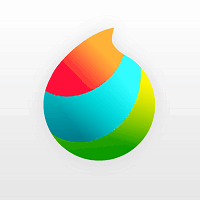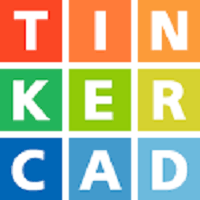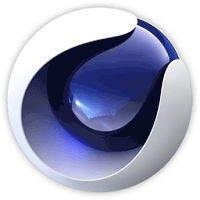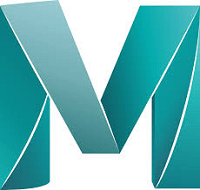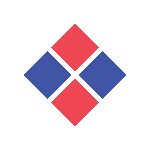What Is 3d Painting Software?
The way artists and designers conceive and realize their ideas has been completely transformed by 3D painting software in today's digital environment. Users can paint and draw in three dimensions with this potent tool, which allows them to add realism, depth, and texture to their work like never before. This buyer's guide will provide you with all the information you need to make an informed choice if you're thinking about investing in 3D painting software.
3D painting software: what is it? Artists, designers, and graphic designers utilize 3D painting software as a digital tool to produce three-dimensional artwork. It enables users to add depth and character to their creations by painting and sculpting directly onto a 3D model. By mimicking real-world lighting and materials, 3D painting software offers a more realistic and immersive experience than conventional 2D painting software.
Types of 3D Painting Software: Standalone and integrated software are the two primary categories of 3D painting software. While integrated software is a function included in a bigger 3D modeling or animation package, standalone software is a full-featured program created only for 3D painting. The user's requirements and preferences will determine which option they choose. Qualities to Take Into Account: It's crucial to take into account the features of 3D painting software when assessing it.
Seek out tools that let you work with a range of file formats, modify and texture 3D models with ease, and paint and sculpt precisely. A user-friendly UI, realistic lighting and materials, and adjustable brushes are further elements to search for. Compatibility: Verify the 3D painting program's hardware requirements and compatibility with your computer's operating system before making a purchase.
Verifying the software's compatibility with third-party plugins or other 3D applications is also essential. Cost: The features and type of 3D painting software affect its cost. Subscription-based solutions are typically more affordable for infrequent users, whereas standalone software is typically more costly than integrated software. To choose the finest software for your needs, take your budget into account and compare the features offered by each program.
What Are the Recent Trends in 3d Painting Software?
The field of 3D painting software has advanced rapidly in the last few years. This has been made possible by the growing need for realistic and eye-catching 3D designs across a range of sectors, including advertising, architecture, and gaming. The combination of machine learning (ML) and artificial intelligence (AI) technology is one of the main developments in 3D painting software.
This makes painting more accurate and efficient by enabling automated procedures and improved features. Additionally, users can produce more complex and realistic textures with AI and ML, giving 3D designs a new degree of realism. The move to cloud-based 3D painting software is another trend. 3D painting software is keeping up with the growing trend of enterprises shifting their operations to the cloud.
Cloud-based software is perfect for remote work and collaborative projects since it provides the flexibility to work from any location and on any device. Additionally, subscription-based pricing models for 3D painting software have become more and more common. This eliminates the need for significant upfront expenditures and gives consumers access to the newest features and updates.
Additionally, it allows users to adjust their subscriptions according to their demands, which makes it an affordable choice for both individuals and companies. The integration of virtual reality (VR) and augmented reality (AR) capabilities is one of the most recent developments in 3D painting software features. This enables users to make changes in real time and have a more immersive experience with their ideas.
Because technology allows them to present their designs in a more interactive and realistic way, this trend is especially advantageous for architects and interior designers. The emphasis on intuitive tools and user-friendly interfaces is another significant trend. Software companies are working to make their products more user-friendly and accessible in response to the growing demand for 3D designs from both industry experts and enthusiasts.
This contains capabilities like real-time rendering, adjustable brushes, and drag-and-drop functionality. In conclusion, utilizing cutting-edge technologies, implementing cloud-based solutions, and offering intuitive user interfaces are the main focuses of current trends in 3D painting software. In addition to improving painting efficiency, these developments have created new opportunities in the field of 3D design.
Benefits of Using 3d Painting Software
Artists and designers may produce beautiful and lifelike 3D artwork with the help of 3D painting software. Because of its many advantages, this kind of software has become more and more popular in recent years.
We will go over the main advantages of utilizing 3D painting software in this buyer's guide so you can choose the best program for your requirements:
1. High-quality and realistic renderings: Creating realistic and excellent renderings of your designs is one of the main advantages of using 3D painting software. This software's sophisticated tools and capabilities let you give your artwork a more genuine appearance by adding complex details, textures, and lighting effects. This is particularly helpful for fields where realistic renderings are essential, such as product design, architecture, and interior design.
2. Efficiency in Time and Cost: Over time, 3D painting software can also help you save money and time. With this software, you may easily and rapidly make changes and alterations, unlike older techniques of making 3D models. This eliminates the need for costly prototypes or physical models in addition to saving you time. Furthermore, a lot of 3D painting software alternatives provide free trials or reasonably priced subscription plans, which makes it an economical option for both businesses and artists.
3. Adaptability and flexibility: The adaptability and flexibility of 3D painting software are yet another important benefit. Animations, video game characters, commercial design, and architectural modeling are just a few of the many uses for this software. Additionally, it gives you the ability to work in a variety of media, including digital painting, sculpting, and texture mapping, which opens up countless creative possibilities.
4. A cooperative workplace: Designers and artists can collaborate remotely on the same project using 3D painting software. Teams with members spread out across the globe would particularly benefit from this, as it removes the need for in-person meetings and can save time and money on travel costs. A seamless and fast workflow is ensured by the collaborative capabilities of 3D painting software, which also facilitates effective communication and real-time feedback.
5. Possibilities for Education and Training: Aspiring painters and designers have a plethora of learning and development opportunities using 3D painting software. Users can continuously hone their abilities and pick up new ways to better their artwork through workshops, online communities, and tutorials. Furthermore, a lot of 3D painting software solutions integrate AI technology, which may help users create intricate drawings and offer beneficial advice and pointers for enhancement.
Important Factors to Consider While Purchasing 3d Painting Software?
In order to make an informed choice, purchasers need take into account a number of aspects while investing in 3D painting software.
The following are some crucial considerations when choosing a 3D painting program:
1. Compatibility: It is essential to confirm that the program is compatible with the hardware specs and operating system of your device before completing a purchase. By doing this, compatibility problems will be avoided and the software will run smoothly.
2. User Interface: A hassle-free experience requires an interface that is easy to use. Seek out software with an easy-to-use interface that will boost productivity and make navigating simple.
3. Features and Tools: Take into account your unique requirements and search for software that provides the features and tools you require. Options for making textures, brushes, layers, and various effects may be included in this. Before making a purchase, be sure to review the list of features because some software also offers more sophisticated functions like UV mapping and 3D modeling.
4. Cost: It's crucial to take your budget into account because 3D painting software can range from free to hundreds of dollars. Free software could offer limited features and technical support, despite its allure. High-end software, on the other hand, could be more expensive yet provide greater technical support and more sophisticated capabilities. Before choosing, think about your needs and financial situation.
5. Technical help: If you run into any problems with the software, it's critical to have access to technical help. Choose software that provides dependable customer service via live chat, phone, or email.
6. Third-Party Compatibility: Take into account whether the 3D painting software is compatible with any other programs or tools you use for your 3D projects. Integration with third-party tools is a feature that some software may offer, which can improve workflow and save time.
7. Updates and Upgrades: 3D software is always changing along with technology. To stay current with the newest features and technology, think about if the software provides frequent updates and upgrades. You can choose the 3D painting program that best suits your requirements and price range by taking these crucial aspects into account. Remember that different software may have different areas of expertise, so pick one that fits your needs.
What Are the Key Features to Look for in 3d Painting Software?
Before making a purchase, every buyer should take into account a few essential qualities of 3D painting software. These characteristics can affect the quality and adaptability of your finished paintings, in addition to having a direct effect on your painting experience. In order to assist you in making an informed choice, I have listed the key characteristics that you should search for in 3D painting software as a professional content writer.
1. Interoperability with 3D modeling programs: The first thing to think about is whether the 3D painting program works with the 3D modeling program of your choice. It is essential to verify whether the painting software is compatible with the 3D modeling application you are currently using. By doing this, you can save time and effort when transferring files across programs and guarantee smooth integration. Furthermore, certain 3D painting software might provide unique add-ons or plugins for well-known 3D modeling applications, enabling more sophisticated features and capabilities.
2. Variety of Brushes and Textures: The ability to add realistic textures and features to your models is one of the most important parts of 3D painting. As a result, the program ought to provide a large selection of brushes and textures. These can include many kinds of pencils, paintbrushes, and even specially made brushes made by other users. Basic materials like wood, metal, or fabric, as well as more complex ones like skin, fur, or scales, can all contribute to the range of textures. Your works will have greater depth and realism because of this variation.
3. Texture Projection and Real-Time Rendering: The capability of texture projection and real-time rendering is another crucial factor to take into account. You can view your additions and modifications to the model instantaneously with real-time rendering, which facilitates and expedites the painting process. You can paint directly onto the model's surface using texture projection, which increases your control and precision over the textures and features. Professionals who must swiftly produce high-quality models will find these features very crucial.
4. Mapping and UV Unwrapping: When painting intricate 3D models, UV unwrapping and mapping are essential elements. To enable accurate painting, the 3D model's surface must be flattened into a 2D approximation, a process known as UV unwrapping. With mapping, you may accurately re-apply your 2D painted textures to the model's surface. For complicated surfaces, such as characters or buildings, to be painted accurately and smoothly, both of these characteristics are necessary.
5. Non-Destructive Editing and Layers: Layers are a crucial component in 3D painting, just like they are in any conventional 2D painting program. Layers make it easier to make modifications and adjustments without compromising the overall design by enabling you to work on different model pieces independently. Another essential feature is non-destructive editing, which gives you greater freedom and space for experimentation by allowing you to make modifications without permanently changing the original model.
Why Do Businesses Need 3d Painting Software?
Companies in a variety of fields, including product design, interior design, architecture, gaming, and animation, are always searching for methods to improve their visual presentations and differentiate themselves in their markets. 3D painting software is useful in this situation. Businesses may use 3D painting software to turn their concepts and drawings into incredibly detailed and lifelike 3D models with cutting-edge textures and materials.
The capacity of 3D painting software to expedite the design process is one of the primary reasons why firms require it. Multiple iterations and modifications are necessary for traditional 2D painting techniques, which can be expensive and time-consuming. Businesses can save time and money by using 3D painting software to see their ideas realistically, make the necessary adjustments, and see the results instantly.
Additionally, companies may produce incredibly intricate and photorealistic drawings with 3D painting software, giving their notion a more true portrayal. In addition to helping companies present their concepts to customers and investors, this also helps them make well-informed decisions while the project is being developed. Furthermore, a variety of tools and features provided by 3D painting software enable companies to quickly include lighting, color, and texture into their designs.
This degree of personalization and control enables companies to produce genuinely distinctive and eye-catching designs that can differentiate them from rivals. Compatibility with various design applications is an additional advantage of using 3D painting software. This makes the entire design process more productive and efficient by enabling companies to easily integrate their designs with other tools and applications.
A library of pre-made 3D objects and textures is also included with 3D painting software, saving companies time and effort compared to developing anything from scratch. This guarantees consistency and quality in the finished product in addition to expediting the design process. Finally, firms can save money by investing in 3D painting software. Businesses can lessen their reliance on costly and time-consuming physical prototyping by producing realistic and detailed models. Furthermore, 3D painting software is an affordable long-term solution because it only requires a one-time purchase with no ongoing fees.
How Much Time Is Required to Implement 3d Painting Software?
The intricacy of the software, the user's experience with 3D design tools, and the project's size are some of the variables that will affect how long it takes to install 3D painting software. However, the implementation process can be finished quickly and smoothly with the right preparation and training. Implementing 3D painting software completely can take a few days to a few weeks on average.
This covers the software's initial configuration, installation, and setup on the user's PC. To guarantee a seamless transition, it is advised to assign a team or individual to manage the implementation process. Users who are unfamiliar with 3D design tools may also have a learning curve during the implementation phase. For users to successfully grasp the capabilities and functionalities of the program, training and resources are crucial.
This can increase overall productivity and cut down on trial-and-error time. The implementation process may entail importing and translating pre-existing designs into the program, in addition to the time required for setup and training. This procedure might take a lot of time, particularly for more intricate patterns or larger projects. But for the switch to the new program to go smoothly, it is essential.
The complexity of the project, the user's degree of skill, and the availability of support and training will all affect how long it takes to implement 3D painting software. The implementation process can be finished effectively with the right preparation and sufficient resources, which will ultimately improve the user's productivity and design skills.
What Is the Level of Customization Available in 3d Painting Software?
Customization is essential for producing distinctive and eye-catching designs while using 3D painting software. To meet the various needs of artists and designers, each piece of software offers varying degrees of customization, from simple tools to sophisticated functionality. Generally speaking, 3D painting software's degree of customization falls into three primary categories: novice, moderate, and advanced.
Basic brush and texture options, as well as a small selection of color schemes and pre-made designs, are usually included with beginner-level customization. These tools are ideal for people who are new to 3D painting because they make it easy for users to produce basic 3D drawings. To assist customers in getting started, they frequently include useful tutorials and tips. By providing consumers with more comprehensive tools and options to further customize their designs, intermediate-level customization goes above and beyond.
Advanced color customization, importing external textures, and the ability to create custom brushes are a few examples of this. Users can experiment with various methods and styles thanks to these tools, which also provide them with more creative control. A vast array of tools and capabilities is available in sophisticated 3D painting software for individuals seeking the highest degree of customization to realize their concepts.
For more realistic and intricate effects, this can include sophisticated texture mapping, layering choices, and even the capacity to design unique shaders. Professional animators, game developers, and artists frequently use such software. Numerous 3D painting programs also provide plugins and add-ons to further expand the customizing possibilities beyond these levels.
These can be anything from single brush sets to full toolkits made for particular fields, including product design or architecture. The degree of personalization in 3D painting software ultimately depends on the needs and skill level of the user. But having a variety of customizing choices opens up countless possibilities and makes it possible to create genuinely original and beautiful designs.
Which Industries Can Benefit the Most from 3d Painting Software?
With the help of 3D painting software, users may easily produce beautiful and lifelike 3D designs. This program has many uses in many other industries, despite the fact that most people might only think of it in relation to entertainment sectors like gaming and animation.
We will examine which sectors stand to gain the most from 3D painting software in our buyer's guide.
1. Interior Design and Architecture: To make their plans come to life in a virtual setting, architects and interior designers might use 3D painting software. This makes it simpler to discuss and implement changes by enabling them to present their ideas to clients in a more engaging and dynamic manner. Prior to the start of building or remodeling, it also aids in spotting any possible design problems and picturing the finished product.
2. Design and Production of Products: 3D painting software can be very helpful for industries that develop and manufacture products, like industrial equipment, automotive, and aerospace. Before going into production, designers may test and refine their designs thanks to the ability to produce precise and detailed models of their products.
3. Promotion and Promotion: Visuals are crucial in the realm of marketing and advertising. Commercials, product visualizations, and other marketing materials can use high-quality, lifelike graphics and animations made with 3D painting software. In addition to saving time and money, this aids in producing more visually appealing and powerful material.
4. Health and Medical Services: The healthcare and medical sectors also make extensive use of 3D painting software. For training and instructional purposes, it is utilized to produce precise and in-depth 3D models of bones, organs, and other body parts. Additionally, it helps surgeons to plan and practice procedures before doing them on patients, which lowers the possibility of mistakes and enhances patient outcomes.
5. Instruction and Practice: 3D painting software might also be advantageous for educational institutes. It gives students the chance to study and apply 3D modeling and design techniques, which are becoming more and more important in today's workforce. Additionally, it offers a more dynamic and captivating educational experience, particularly in fields like product design, engineering, and architecture.
Conclusion
To sum up, 3D painting software is a vital resource for digital designers and artists. It is a useful tool for creating 3D artwork because of its many strong capabilities, which include realistic rendering, sophisticated texturing, and user-friendly interfaces. It's crucial to take your budget and particular requirements into account while selecting the best 3D painting software.
Be sure to find out which projects the software is best suited for and whether it is compatible with your computer system. Additionally, take into account the software company's resources and service level, as well as any possible program integration. In the end, purchasing top-notch 3D painting software can significantly improve your creative process and assist you in producing breathtaking and expert outcomes.
You can choose the best software for your 3D painting requirements by utilizing this buyer's guide as a reference.






